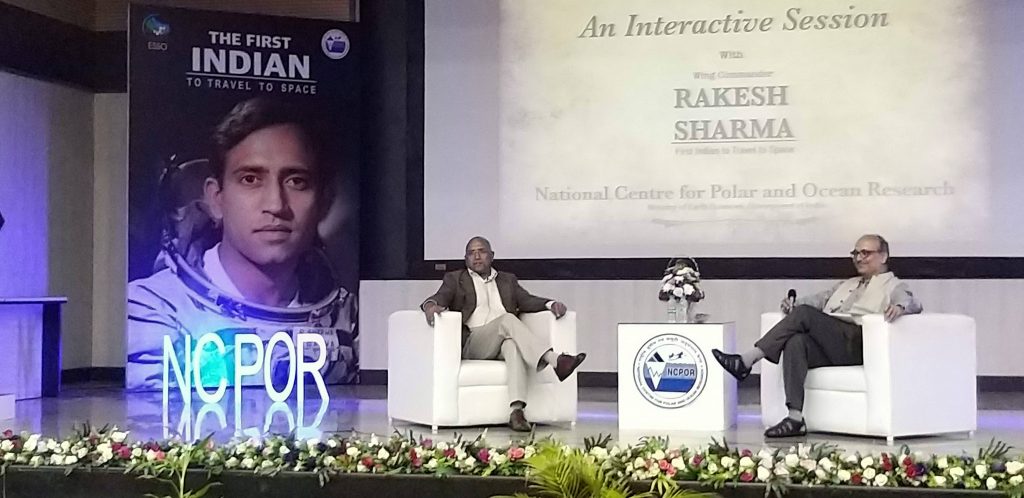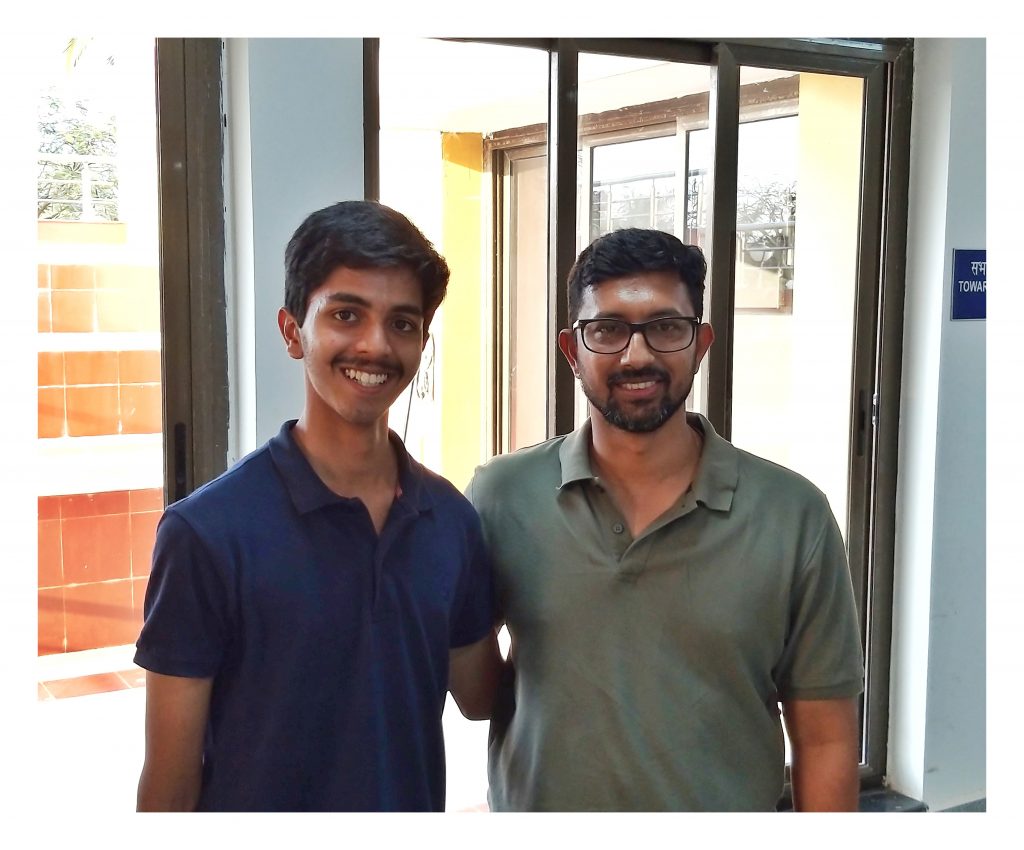At 0638 hours Indian Standard Time, thirty-five years and two days ago, Wing Commander Rakesh Sharma AC (Retd.) blasted off from the Baikonur cosmodrome in Kazakhstan, creating history as the first Indian citizen to reach space.
At 1750 hours Indian Standard Time, today, at the National Centre for Polar and Ocean Research (NCPOR) in Vasco, Goa, I had an opportunity to meet him!
On the occasion of NCPOR Foundation Day, the cosmonaut was invited for an open interactive session with members of the general public in the evening. Needless to say, registrations quickly filled up the limited-seats event and this evening, the auditorium was brimming with a lively air of enthusiasm. School children, college students and working professionals alike, let their excitement show, as questions were put forth, by the dozen.

A man of few words, Rakesh Sharma gladly answered as many of them as were possible within the tight time constraints.
It was a nostalgic two hour flashback for the pre-millennial adults as they recalled unanswered questions from those days of wondrous excitement, watching his televised broadcast on Doordarshan. Thirty-five years down the line, they eventually got answers!

Dr. Rahul Mohan, Project Director of Antarctic Sciences at NCPOR Goa, hosted the interactive session, quizzing the cosmonaut about several other aspects of his life as well, from his early childhood to each of his three retirements. (Yes, he retired thrice!)
Here’s what I asked him:
Having experienced some of the highest G-forces a human could, including a MiG 21 seat ejection [over Ojhar near Nashik in Maharashtra], what would you say has been the greatest impact it has had on your body over a long period of time?
And here’s a paraphrased version of his response:
There certainly were very high G-forces, sometimes having 3 to 4 times earth’s gravity. There were, however larger G-forces during a Mirage 2000 test flight because it need to be tested at 9G. It would need to withstand upto 9 times the effect of acceleration due to gravity of earth. Keeping physically fit and remaining in good health was enough to deal with these effects. Anyhow, one would only experience such high G-forces for a short duration in flights. But yes, to deal with it you need to stay fit.
A few other salient points from his interaction included:
- About Math
- Despite scrapping through mathematics in school, Rakesh Sharma eventually gained a commendable degree of mastery over the subject through his love for aeronautics in the National Defence Academy (NDA) as an Air Force Cadet.
- On the ‘secret but exciting’ programme, codenamed ‘Pawan’ which preceded his training in the Soviet Union
- Even before being sent to the USSR for their final training programme prior to the Soyuz T-11 mission, both Rakesh Sharma and Ravish Malhotra were aware of which one of them would be sent onboard, and who would be in the backup team.
- How about going back?
- If he ever gets another chance to return to space, this time round as a tourist, he would certainly jump right at it. This question was answered even before the question was completed. That sure says a thing or two about his tenacity at seventy!
- Yoga (in orbit)
- He’s the first person to have practiced yoga in space, experimenting with it’s advantageous effects to maintain various aspects of one’s health while in a micro-gravity environment. Final verdict: It works 🙂
After the Q&A session, everyone had an aerial-shot group photo with the cosmonaut, followed by refreshments.
Serendipitously, I also had a rare opportunity to meet Commander Abhilash Tomy KC NM: the first Indian to complete a non-stop solo circumnavigation of the earth, by sailboat. I. Was. Ecstatic! Meeting two of my heroes in one evening was truly a moment of a lifetime!

On his way out, after a short tea break with the Director of NCPOR Goa, we managed to snag one last photograph, exclusively in close proximity to Wg. Cdr. Rakesh Sharma AC!

Photo Credits: Rakesh Rao
Thank you NCPOR Goa, for giving the general public a chance to interact with a national icon and living legend.
Special thanks to Mr. Rakesh Rao (Science Filmmaker – Enscitec Productions), Dr. Swati Nagar (Outreach – NCPOR Goa), Dr. Rahul Mohan (Project Director Antarctic Sciences – NCPOR Goa) and Dr. M. Ravichandran (Director – NCPOR Goa) as well as all the other folks at NCPOR Goa, who worked tirelessly behind the scenes to make this wonderful evening possible.
We eagerly look forward to many more such events there!